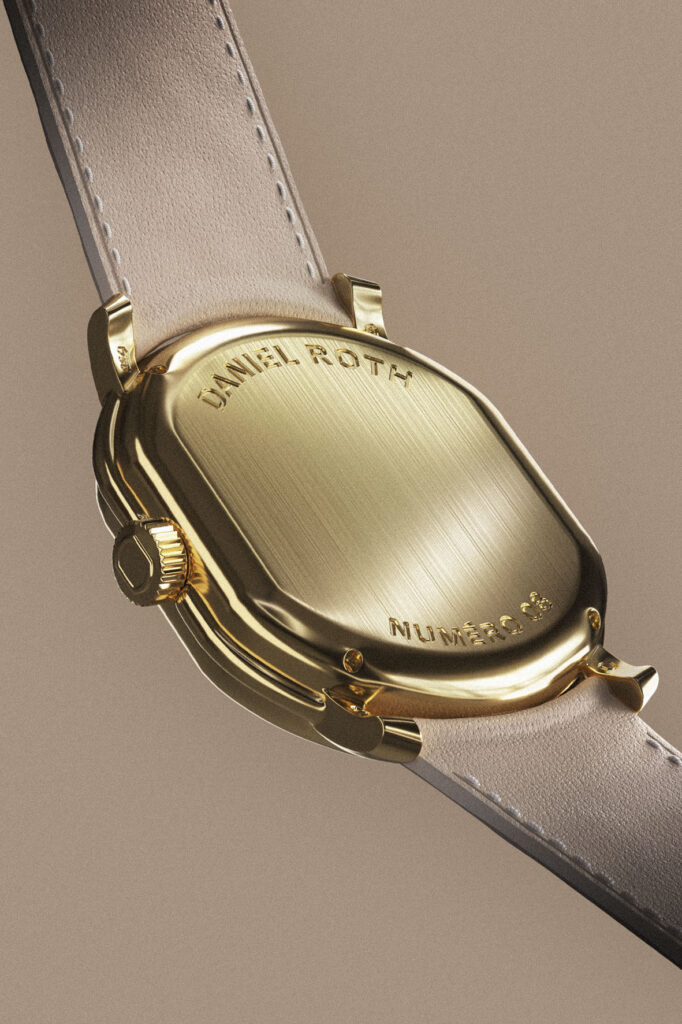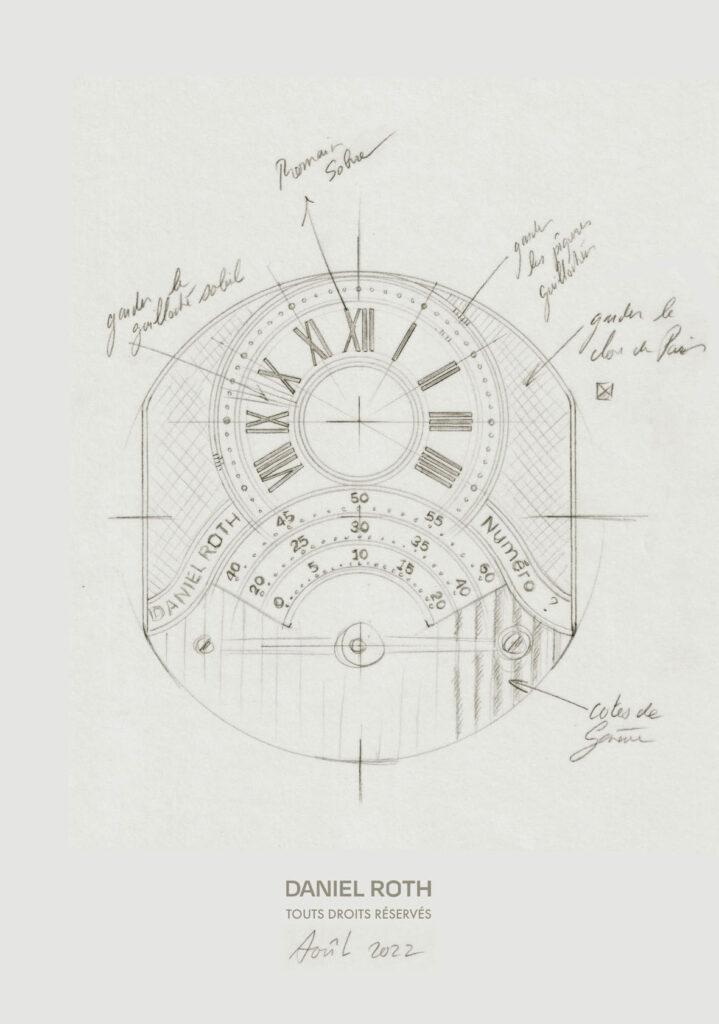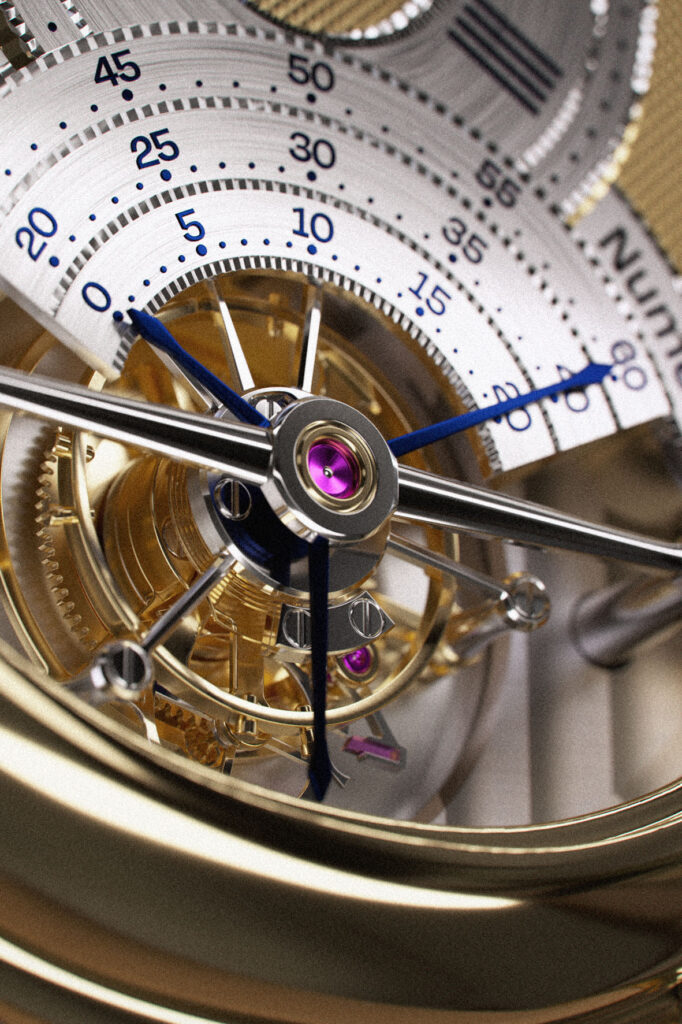Daniel Roth: Tourbillon Souscription
22 May 2023“Art never evolves, but the matter of art is never quite the same” said the poet Thomas Stearns Eliot in his essay “Tradition and the Individual Talent”.
After 35 years, the milestone of independent watchmaking makes its return under the careful guidance of Jean Arnault, son of Bernard Arnault (chairman and ceo of LVMH) and current development and marketing director for Louis Vuitton’s watch section. Daniel Roth is “reborn” and amazes, in March 2023, with the Tourbillon Souscription, a meticulous tribute to the C187 Tourbillon Double-Face from 1988.

LA MONTRE OBJET D’ART
Going backwards, the names of George Daniels, Philippe Dufour, Gerald Genta and Daniel Roth are inextricably linked to the history and artistic legacy of haute horlogerie.
Daniel Roth, in particular, was a precursor of independent watchmaking. In combining traditional craftsmanship and high complications, he anticipated the standards and the very definition of an “independent timepiece”. His vision and ideas paved the way for entire future generations of watchmakers. In the early 1970s, Daniel Roth was a key figure in the creation of Breguet’s modern identity. In 1973, he completed his studies on the French brand taken over by the Chaumet brothers and in 1976 contributed to its relocation to Le Brassus in the Vallée de Joux, one of the centres of Swiss haute horlogerie. Together with François Bodet, he developed an “author’s style” (coin case, guilloché dial, pomme évidée hands) that will constitute the essence and recognition of Breguet timepieces. The references 3130 (perpetual calendar), 3237 (chronograph), 3330 (day-date) and 3350 (tourbillon) demonstrate the accurate study of the works of A.L. Breguet and represent the ultimate experimentation of these codes. In 1987, Daniel Roth left the company and subsequently opened his own workshop in Le Sentier in the Vallée de Joux where the story of «La montre Objet d’Art», the watch as an art object, began.

The concept of “independence” is quite distant in time, and Roth has no reference to draw inspiration from but he has, from early on, a clear idea of the types of watches he would make and the way he would produce them. His many years of experience at Audemars Piguet and Breguet also made him aware of the capabilities the relevant brands have to mass-produce a large number of watches while maintaining their quality.
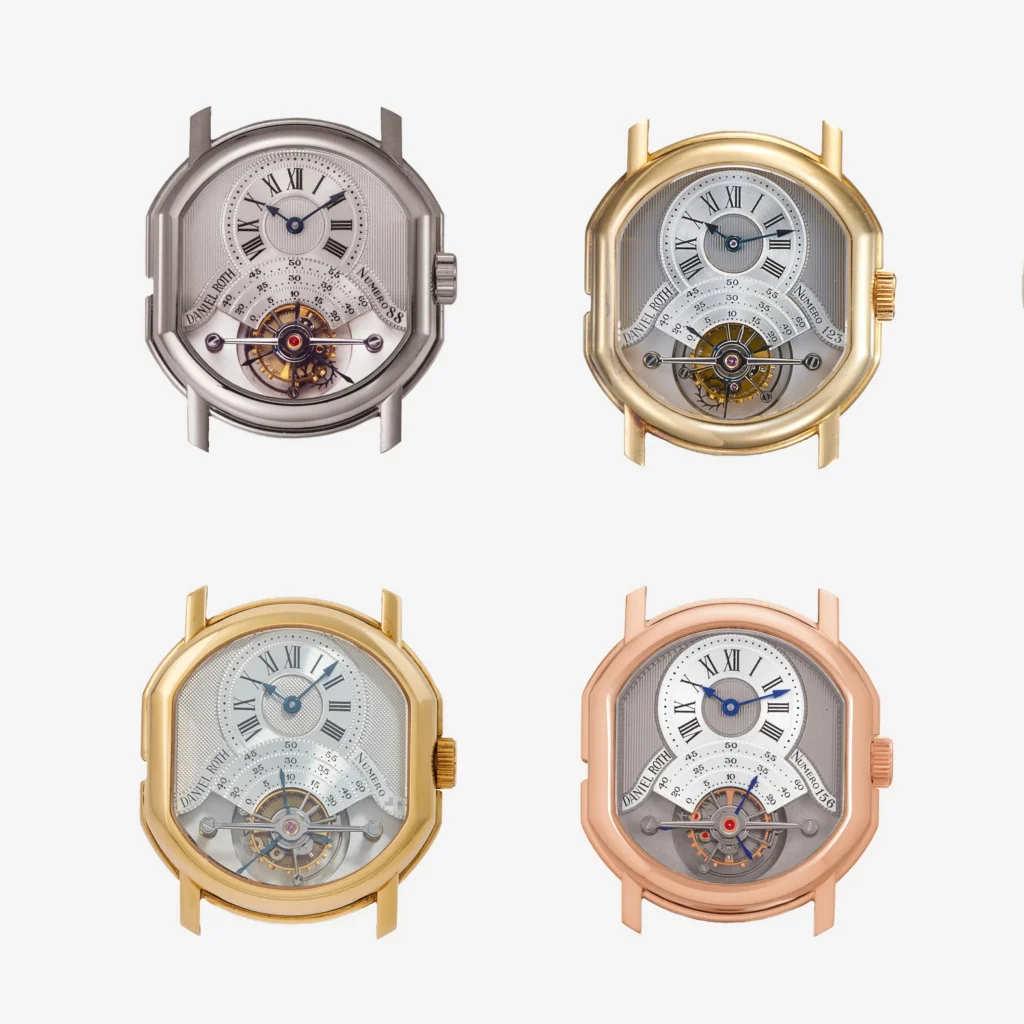
In the first four years, working independently, Roth’s desire was to create a homogeneous collection ranging from complicated models to time-only models. These include the references C187, C147, C107, C117, four “neo vintage” staples with four different complications. First and foremost there is the reference C187 Tourbillon, developed in 1988 as the embodiment of Roth’s stylistic language: adouble ellipse case in precious metals, stepped bezel, straight lugs, guilloché dial, blued steel hands. The model with Tourbillon is also developed from the ébauche of Lemania Calibre 387 and features a second dial with date and power reserve indicator on the back. This is followed by the hand-wound C147 Chronograph model on a Lemania 2320 base, which arrived in 1990 and is made of precious materials only. Again, as with the C187, the dial is decorated with Clous de Paris motifs (here with vertical stripes). The challenge continues with the triptych of “time only” references, C107 C167 C127. Model C107 also from the 1990s represents the first approach with an automatic movement, based in this case on the Frederic Piguet Calibre 71. A design purged of all complexity with a gold case, a guilloché dial with vertical motifs and only the hour and minute hands. A year later, Roth released a manual version again based on Piguet, the Reference C167. The penultimate challenge lay in the model C117 Perpetual Calendar of ’91, produced in collaboration with Philippe Dufour. Here the sub-dial is used to show the day of the month on the outside and the year on the inside. While the month and the day of the week are shown on two apertures above this dial, or through two small sub-dials superimposed on the hour and minute rounds. Daniel Roth’s latest works are related to two further complications that have been studied and experimented: the minute repeater and the jumping hours with retrograde minutes. The first, unfinished, based on Lemania calibre 389 produced in only three prototypes in yellow, white and pink gold. While the last, called the Papillon, celebrates the brand’s 10th anniversary in 250 pieces divided as follows: 110 in white gold, 110 in pink gold, and 30 in platinum.
THE ROUND PATH
A crossroads of change runs through the history of Daniel Roth, from the initial acquisition by The Hour Glass in ’94, the bankruptcy and subsequent entry of Bulgari in the early 2000s, and the Jean Daniel Nicolas brand. At the same time, the design of the watches also changed, shifting and turning towards an increasingly contemporary and sporty aesthetic. And the succession of new managements inevitably brought with it a gradual distancing of the brand from the master’s original vision. Only today, together with the LVMH group (owner of Bulgari since 2011) and La Fabrique du Temps, Daniel Roth can finally return to pay homage to his heritage. In the new timepiece, overseen by directors Enrico Barbasini and Michael Navas, we see the savoir fair and stylistic hallmarks of the master watchmaker.
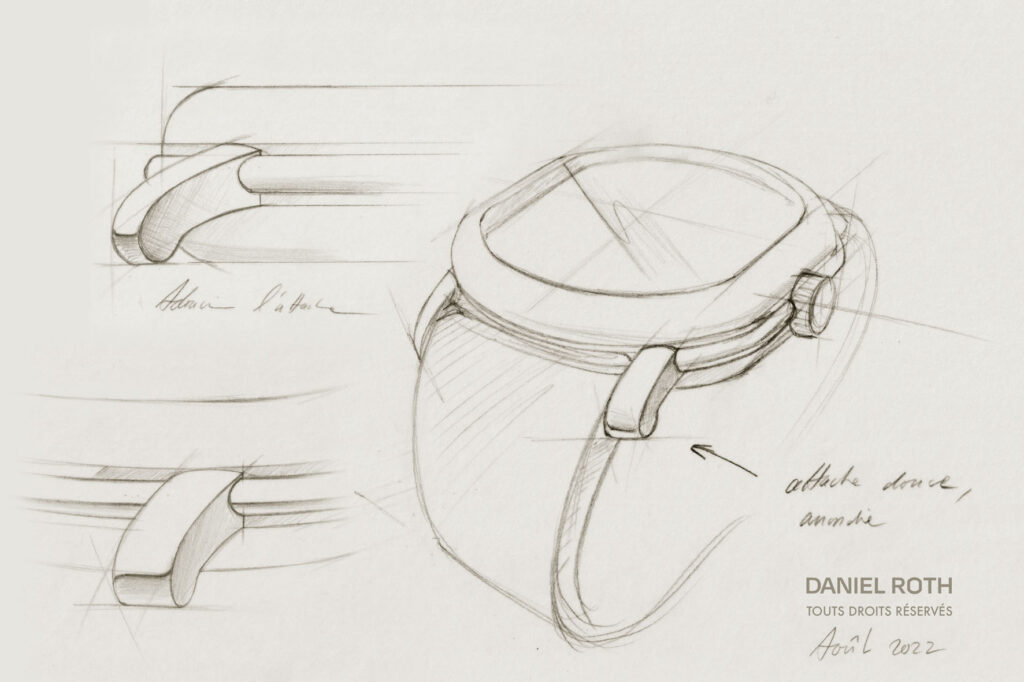
The 35.5 x 38.6mm case, crafted in yellow gold, retains the iconic double ellipse shape and stepped bezel typical of Roth watches. The lugs are still soldered by hand to the case middle but are slightly reshaped in favour of a more ergonomic and elegant profile. The aesthetics of the Tourbillon Souscription are further emphasized by the closed back, displaying the brand name and the numbering of the model, and the single front dial. These choices allowed the team at La Fabrique du Temps Louis Vuitton to achieve an overall case height of 9.6 mm (smaller than the original 11 mm).
The dial is the result of a collaboration with one of the greatest living watchmakers, Finnish-born master Kari Voutilainen. Specifically, the base of the dial, initially made from a 3N solid yellow gold plate, is decorated with the Guillochage technique with Clous de Paris motifs. The Circular Grained finish is used for the hour, minute and seconds indicators. Further down, at the height of the aperture at 6 o’clock, both, the side plates carefully decorated with Côtes de Genève and the plate underneath the tourbillon with a frosted finish, are visible. A further detail worthy of attention concerns the typography, which has been simplified to sans serif font to give the watch a more contemporary appeal.
The winding crown, which also features an elliptical logo, allows the DR001 manufacture calibre, designed and made by La Fabrique du Temps Louis Vuitton exclusively for Daniel Roth, to be wound manually. Respect for the brand’s heritage of craftsmanship is also evident in the decoration of the DR001. In fact, the movement is entirely hand-finished and the decorative flourishes are the bridge for the wheel driving the tourbillon in black-polished steel and the mirror-finished winding click. On the technical front, it boasts an 80-hour power reserve with 21,600 oscillations per hour at a frequency of 3Hz.
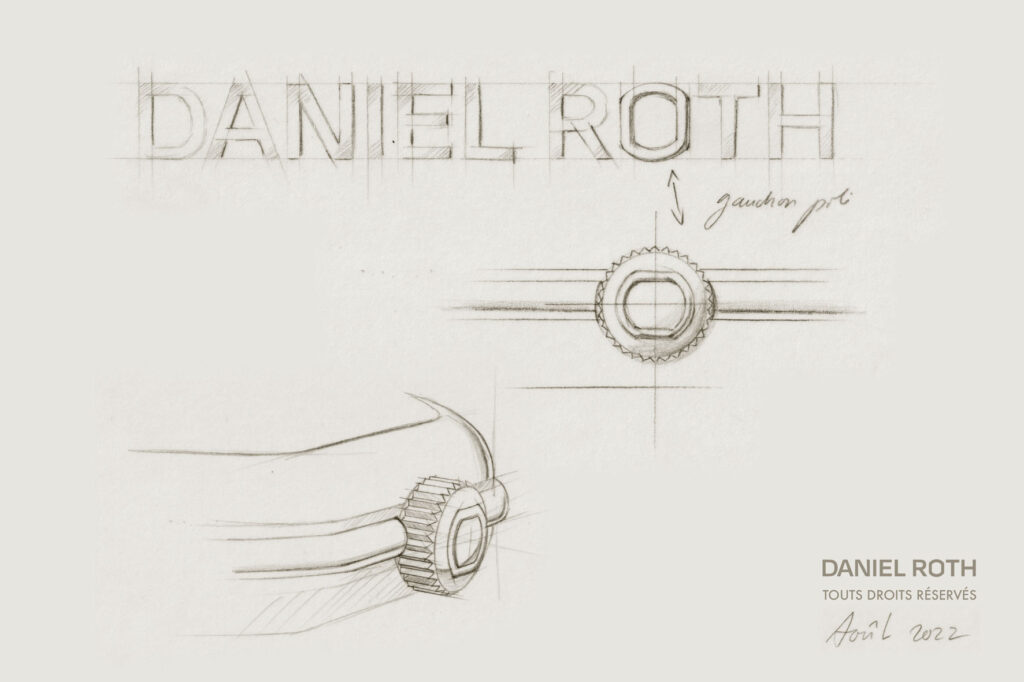
The heart of the DR001 is its tourbillon regulator. The tourbillon makes one revolution every minute, allowing it to function as a seconds hand. As a result, the tourbillon cage carries a three-armed, heat-blued seconds hand that is read in tandem with a tri-sectioned seconds scale on the dial – an iconic characteristic of all Daniel Roth timepieces.
AVAILABILITY AND PRICES
The new Tourbillon Souscription, limited to a production run of just 20 pieces, will be sold on “souscription” basis. Clients will “subscribe” with a deposit upon order confirmation, with the balance due upon delivery in early 2024. Available only from selected partners at a price of CHF 140,000 (excluding tax).
By Luca Barone



